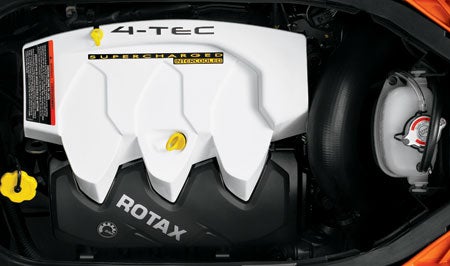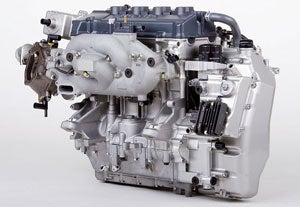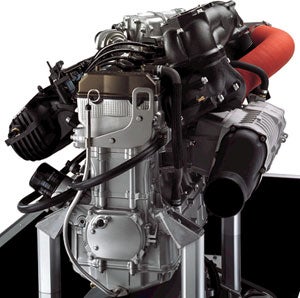Superchargers: The Performance Boost of Choice
Why manufacturers choose superchargers over turbochargers
Speed and power are key ingredients to the PWC performance equation. Unfortunately a PWC is a tight and confined workspace for any engine. That means many of the common methods of producing power — larger displacement, additional cylinders, or significantly changing the bore and stroke — just aren’t practical. Neither is dramatically increasing RPM, or tinkering with compression or valve cams, all of which can tax the engine to its breaking point, or require the constant use of expensive high-octane fuel.
How to generate those much-sought-after performance gains? At the highest end of the spectrum, manufacturers routinely turn to forced air induction. Literally cramming more air into the engine to produce more power. More air in the engine means more fuel can also be burned, the end result being more power produced from each combustion that pumps that engine’s cylinders up and down.
 Sea-Doo, along with Kawasaki and Yamaha, has turned to turbochargers to bring PWC enthusiasts huge performance gains.
Sea-Doo, along with Kawasaki and Yamaha, has turned to turbochargers to bring PWC enthusiasts huge performance gains.In the PWC industry, the preferred means of cramming all that air down an engine’s throat is supercharging. Superchargers are essentially air compressors, used to force air into the engine. Air is generated via a pump, typically belt-driven off the crankshaft. At the highest levels, additional power is also produced by cooling that incoming air via an intercooler, which condenses the incoming air even further. Condensing the air allows even more air to be pumped into the engine, meaning, you guessed it, even more power.
 Honda is the lone manufacturer still relying on turbochargers to power its watercraft.
Honda is the lone manufacturer still relying on turbochargers to power its watercraft.How does supercharging differ from turbocharging? Turbocharging utilizes exhaust gases to drive a compressor. Hot exhaust gas passing through one side of a turbine cause it to spin. In turn, the vanes on the opposite side draw in more air, compress it, and then send that juiced-up air on to the engine intake. It’s a formula Honda has relied on for its PWC since the brand’s beginning, but one that the majority of PWC manufacturers have avoided for one reason — turbochargers are considered better for midrange and high-end power, but often suffer a lag (known as turbo lag) off the bottom. In contrast, superchargers often provide near instantaneous acceleration. A significant amount of boost can be supplied at lower engine speeds.
This is especially important to the PWC consumer, who has become accustomed to almost instantaneous throttle response on the low end of the power curve. The direct link between the supercharger and the engine also means boost pressures relate directly to RPM.
 Kawasaki uses a supercharger to get a whopping 300 horsepower out of its Jet Ski Ultra 300X.
Kawasaki uses a supercharger to get a whopping 300 horsepower out of its Jet Ski Ultra 300X. The upside to turbocharging is that the system itself is relatively simple, typically lighter in weight, and offers more options for locating the actual parts. Turbocharging also runs off basically spent gases, meaning that it robs none of the power that the engine is working so hard to generate. In contrast, a supercharger siphons off a portion of the engine’s power, most often noticed on the top end.
Both systems place more stress on the engine itself, resulting in higher temperatures and increased stress. Superchargers are also notorious gas-guzzlers. True PWC performance junkies, however, will likely point out that a supercharger has a direct, physical connection to the engine, allowing the power gains to be felt almost immediately. By comparison, turbocharged engines often display that aforementioned lag, the delay felt while the turbocharger “spools up,” or produces enough exhaust pressure, after the throttle is opened.
Will these superheroes remain the go-to weapon for PWC performance? Probably for the immediate future…or at least until that flux capacitor thing hits the market.
Related Reading
2010 Sea-Doo RXP-X 255-Review
Kawasaki Unveils Biggest Stock Power To Date
2010 Yamaha FZS Review
2008 Honda AquaTrax F-15X Review
Catching up with R&D Performance Products
Inside SBT
Get PersonalWatercraft.com in your Inbox!
Like PersonalWatercraft.com on Facebook
Comments
Most Popular

2025 Yamaha JetBlaster PRO 2-Up Review

2024 Kawasaki Jet Ski STX 160X Review

Remembering the Sea-Doo XP

Whatever Happened to the Wetbike?

2025 Yamaha JetBlaster Review











 Your Privacy Choices
Your Privacy Choices